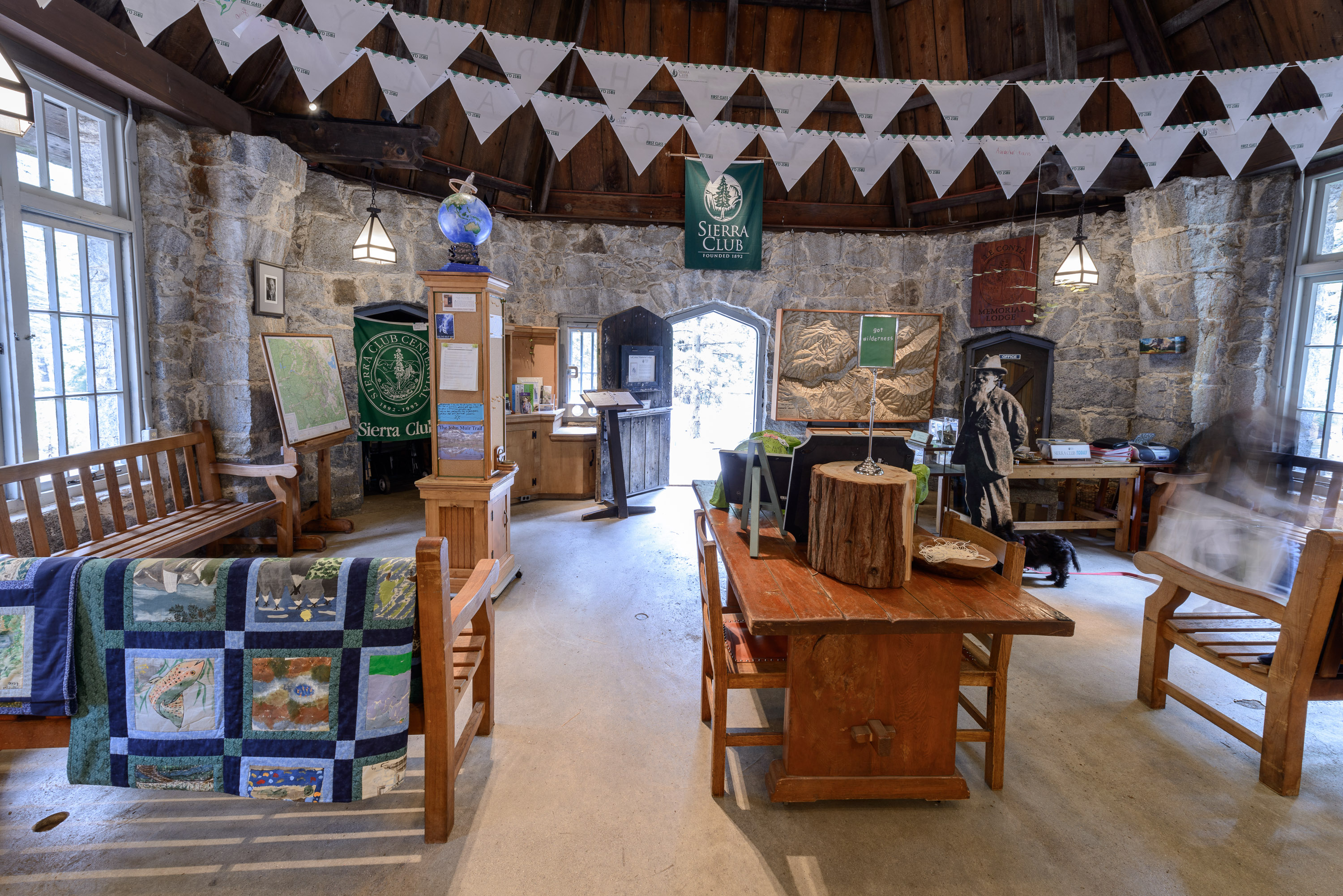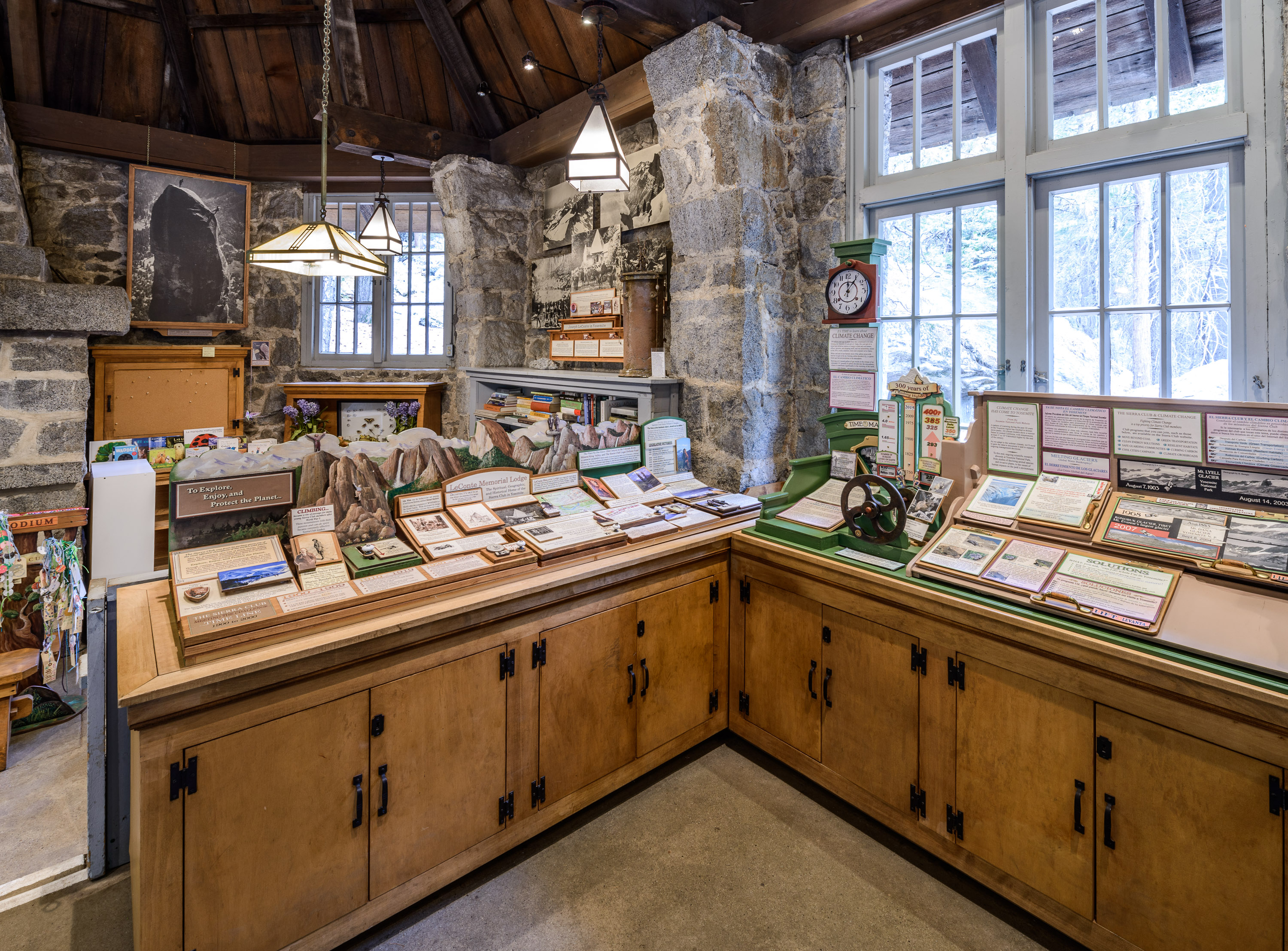"This is where the Sierra Club began its journey to the influential environmental organization it has become through the efforts of thousands of dedicated individuals and families. For the dream in all of us, from the historic past, to the present volunteers, to the future generations depending on us to remember who we are, where we have been, and help chart where we are going. Please support our effort to save the YCHC for the future." —Bonnie Gisel, curator.
The Yosemite Conservation Heritage Center (formerly LeConte Memorial Lodge), a National Historic Landmark, was built by the Sierra Club in 1903-04.
The Sierra Club still operates the iconic structure as a public education and visitor center, presenting and promoting the conservation ethic through public programs, educational displays, a publicly accessible library, and interactive programs for kids and families.
Although styled a lodge by its founders (in the traditional meaning of a small house at the gates of a park or a meeting and gathering place), this small stone building has never been used for overnight accommodations. Rather, it has always served as a library and education center.

About 16,000 people visit this historic structure each year. Since 1904, a curator and Sierra Club volunteers have served as summer caretakers -- providing information to park visitors about Yosemite, the Sierra Nevada, and the national parks.
The library collection includes books on the natural and human history of Yosemite and the Sierra Nevada; books by and about Yosemite luminaries like John Muir, Ansel Adams, and David Brower; children's nature literature; and various Sierra Club books, magazines, and pamphlets.
Free programs on natural history, outdoor adventure, and conservation issues are presented several evenings each week at 8 pm.
The unique structure was originally named for the scientist and university professor geologist Joseph LeConte, a member and early director of the Sierra Club, who died in Yosemite Valley in 1901. Unfortunately, Joseph LeConte's legacy has since been marred by the rediscovery of his late 19th-century writings on segregation and racial superiority. Those views are unacceptable to the Sierra Club, which is committed to diversity, equity, and inclusion within its membership, in our national parks, and in society at large. Therefore, in 2015, the Sierra Club requested that the LeConte Memorial Lodge be renamed.

Although motivated by a rejection of Joseph LeConte's writings, the name change to Yosemite Conservation Heritage Center also more accurately represents the educational mission of the center. The center tells the stories of the many Sierra Club leaders who have promoted protection for Yosemite and other national parks. Current exhibits cover John Muir, Ansel Adams, David Brower, and other important Sierra Club leaders. The center also highlights the Sierra Club's current endeavors to combat global climate disruption and support environmental justice.
Through interpretive environmental education programs and projects, the legacy of stewardship continues. Through the service of many Sierra Club volunteers and one seasonal staff curator, the Yosemite Conservation Heritage Center continues to inspire people to enjoy, explore, and protect the natural world.
Two examples of the center's environmental education programs are the Green Shoes Project, which encourages visitors to care about natu re and be stewards for the wilderness. Our theme for the summer 2016 season was "Think Like a Tree," which continued in 2017. Kids and adults can take home information about the life cycle of trees and create an art project that they can take home. The project for the summer 2017 season was "Love Your Nature." Visitors of all ages could be found tracing their hand on construction paper (of all colors), representing the diversity of people, cutting them out, and hanging their handprint on the mantel—along with all other visitor handprints
As curator Bonnie Gisel says: "We are living in an era in which the objective is to enlist everyone—regardless of gender, ethnicity, demographic, economic status or culture. And, in which we are called not only to be inclusive of all human beings, but inclusive of the natural world. Our approach will provide a platform for equity and justice for all and for the world in which we live And, we are responsible to reach into the future with big hearts to embrace an intergenerational ethic. The future belongs to our children, grandchildren, great-grandchildren and the future generations of the flora and fauna with whom we interact in ways we do not always even perceive. Here on this platform we may engage to solve the greatest environmental challenges we face, remembering this planet is our home. 'Love Your Nature'."
The Yosemite Conservation Heritage is open from Wednesday through Sunday from 10 am to 4 pm, May through September. The building is closed during the winter months. Pursuant to the NPS Rock Fall Mitigation Report prepared in 2012, the YCHC can only operate from May through September, because the building is located in a major rock fall zone.
Photos courtesy of Peter Mason